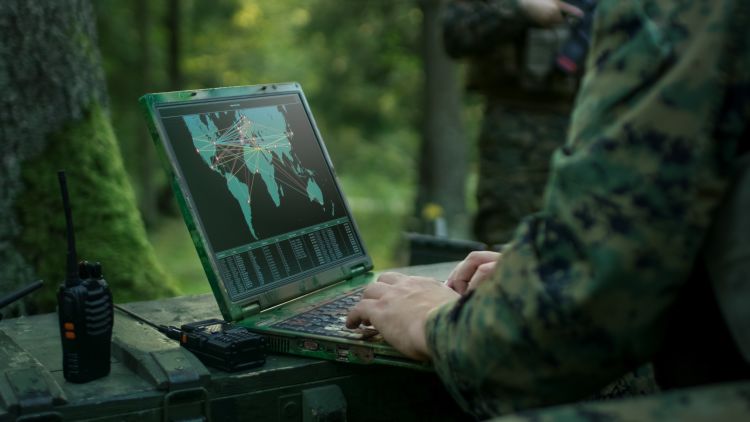Assuring Resilient Positioning, Navigation and Timing (PNT)

In an age of high-speed internet, on-demand entertainment, and same-day package delivery, we’ve come to expect constant, seamless technological performance and stability. “We need to communicate - we pick up a phone, and it just works.” Kevin Coggins, vice president and lead of Positioning, Navigation and Timing (PNT) at Booz Allen Hamilton and former cross-functional team leader for PNT across the U.S. Army, says. But what if it didn’t?
Coggins explains that the system enabling everything from our smartphones to bank transactions is the same one behind the majority of U.S. critical infrastructure, from power generation and telecommunications to our ability to transport goods and services. The Department of Homeland Security, for example, considers 13 of the nation’s 16 critical infrastructure sectors to be ‘critically dependent’ on PNT. Coggins asserts that the loss of PNT would cost the U.S. at least $10 billion a day. It’s also crucial to the functioning of military and intelligence operations and fundamental to the warfighters’ ability to maintain initiative, coordinate movements, target fires, and communicate on the move. GPS-delivered PNT information enables everything from radio communications and network synchronization to intelligence systems and information gathering, to cruise missiles, weapons systems, and electronic warfare.
Despite the devastating costs of interrupted PNT, this data still comes primarily from the nearly half-century-old constellation of Global Positioning System (GPS) satellites, originally developed by the U.S. military in the 1970s. Coggins stresses that “GPS is an old technology… when you have old technologies that are in everything, you have vulnerabilities.” GPS, the PNT gold standard for military and civil users worldwide and one of the most intricate technological innovations the world has ever seen, has become so prevalent and easy to use that many forget that, “as complex as it really is, it can be easy to break. It can be easy to disrupt.”
Challenges with PNT today
The issues confronting GPS and PNT are both difficult and multifaceted since they touch nearly all aspects of how the U.S. military operates. Reliance on PNT is embedded in all operations. The technology, while extraordinary for its time, is aging fast and is very costly to replace. “GPS receivers are like computers, except we don’t patch the software in a GPS receiver, we don’t upgrade the GPS like we’ve learned to do with the computers that we use every day,” Coggins cautions.
Additionally, the low-frequency signal that GPS broadcasts is considered weak, does not penetrate structures very well, and must continuously “ping” to ensure the critical PNT data is being provided to all users. The requirement to continually broadcast a signal opens the GPS network to potential jamming and disruption. Maintaining global coverage requires a network of 31 large satellites placed in geosynchronous orbit. Expanding the current network of satellites is both costly and time-consuming. “We cannot update without replacing the satellites and updating all of the receivers. So this really, really difficult problem has been created,” Coggins says.
Adding to the urgency of this challenge, the Department of Defense’s 2018 National Defense Strategy repeatedly emphasizes the need to strengthen the resiliency of the military’s space, information and cyber networks in order to effectively conduct 21st century warfighting, stating:
We cannot expect success fighting tomorrow’s conflicts with yesterday’s weapons or equipment.
GPS, Coggins elucidates, is the ‘center of gravity’ for our PNT capability right now, and our adversaries know it. The need for multiple satellites simultaneously available in order to ensure the reliable and accurate transmission of PNT data is a structural vulnerability of GPS. The concept developed by famed German military strategist Carl Von Clausewitz says that, if an enemy can prevent you from accessing or using the one thing at the center of your capabilities, they can defeat you. China, Russia, Iran and other nations are all pursuing counter-GPS strategies. A recent 2018 U.S. Maritime Alert, for example, warns that “multiple instances of significant GPS interference continue to be reported by vessels and aircraft operating in the Eastern Mediterranean Sea… this interference is resulting in lost or otherwise altered GPS signals affected bridge navigation, GPS-based timing, and communications equipment.”
Coggins illustrates the outsized effect this can have on weapons systems saying, "these weapons systems operate as a system of systems, few are used in isolation. So if you disrupt PNT just for that radio, you can desynchronize our ability to do our jobs, to have an effect."
The future of PNT for government and military organizations
The military is working to incorporate system diversity and develop technologies to aid GPS when its signal becomes degraded or denied. “No single PNT sensor will provide you with assured PNT everywhere all the time,” warns Rex Howe, a senior engineer with the PNT division of the Army’s Command, Power, and Integration Directorate. “Each has its own specific strength and weakness, but by uniting them into a fully integrated system the result is better overall performance.” Nascent space-based and ground-based technologies offer new options to reduce the dependency on PNT information coming solely from GPS, while simultaneously making it more difficult for adversaries to jam or disrupt GPS signals or disable the satellites themselves. PNT is an area ripe for greater experimentation with new technologies and techniques. “GPS is just one method for getting PNT information,” Coggins asserts. “I am promoting the adoption of other technologies and methods of PNT. There is so much innovation happening today.”
Emerging PNT technologies and methods
Creating open architecture systems. Both cheaper and more resilient than closed systems, they also provide the ability to adapt to emerging needs and disruptive technology improvements with a “plug and play” capability. Rather than conduct a complete redesign of each individual platform or system to accommodate an upgrade, open architecture systems make it possible to quickly modernize simply by snapping in a new circuit card, for example, thus instantly increasing PNT capability.
Expanding the use of Low Earth Orbit (LEO) satellites. These satellites are smaller and less expensive to build and operate than the current generation of large satellites. LEOs also transmit a stronger signal less susceptible to jamming than GPS.
Exploring the capabilities of Enhanced Long Range Navigation (eLORAN) to provide a backup to GPS timing. eLORAN is a very low frequency radio navigation system, whose signals are very difficult to interfere with and disrupt. eLORAN is supplemented by a land-based network of communication nodes that enhance resiliency.
Evaluating the benefits of Ring Laser Gyros. While an older technology, Ring Laser Gyros are becoming much smaller in size and could provide additional resilience for PNT data.
Using quantum-based clocks. Advances in quantum computing are enabling the development of the first-generation of atomic clocks that fit on computer chips. Quantum-based clocks may be as much as 1,000 times more accurate than what is distributed through our GPS constellation today. These specialized chips could be used to provide secure and resilient PNT data. The cost to produce these specialized computer chips continue to fall as the technology matures. Moreover, they would also be sufficiently small and portable, making it feasible to put them on planes, tanks, and other military systems.
Combining quantum clocks with inertial sensors. This would allow us to conduct today’s encrypted transactions even in an environment where our adversaries denied us the use of our GPS constellation. Dr. Michael Griffin, Undersecretary of Defense for Research and Engineering, describes the benefits to be reaped from this advancement: “Everyone using point-of-sale transactions, everything that’s encrypted today, people are using the GPS timing signal as the reference standard. Well, our adversaries know that and that makes it a vulnerable thing. If we can remove that vulnerability by means of quantum clocks and inertial sensors so that we’re not as dependent upon GPS for PNT, that’s a huge win.”
None of the emerging technologies would appear to be an outright replacement for GPS. Rather they present a matrix of options using open architecture approaches that government and military officials can select from to achieve optimal alignment with their organizational and operational requirements. Coggins argues that “this is a whole new way of thinking beyond just using GPS."
Download the viewpoint to learn more about this topic.
About Kevin Coggins
Kevin Coggins, vice president and lead of PNT at Booz Allen Hamilton, has spent his entire life seeking out challenges that lie in the often-ill-defined crossroads where civil society and the military meet. Growing up in Pensacola, Florida, the “cradle of naval aviation,” Coggins spent time in Air Force Junior ROTC and the Civil Air Patrol before pivoting to the Marines and their elite Force Recon platoons.
Leaving active military service, Coggins matriculated at the University of Florida, becoming an electrical engineer and applied his engineering background to help solve vexing problems with grain storage and insect infestation. Along the way he launched a successful start-up firm, and spent time working in the defense industry.
Pivoting again to take on new challenges, Coggins signed on as an engineer for the Army in the service’s PNT program office, at a time when the commercial GPS market was booming but average users possessed little understanding of the technology underlying the network’s functioning. Over the next seven years, Coggins advanced from a GPS novice to become the first multi-office team leader for PNT across the U.S. Army as well as a member of the government’s select Senior Executive Service. Initially serving as the direct reporting program manager for PNT, Coggins created the Army's Assured PNT program and introduced the PNT Systems of Systems Architecture.
Continue the conversation at linkedin.com/in/kevincoggins.







